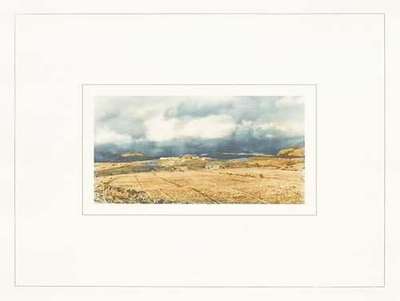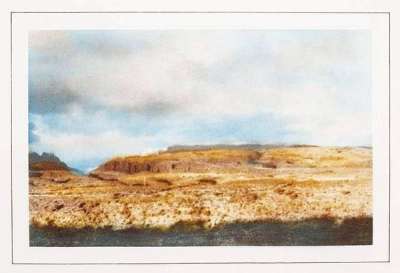
Kanarische Landschaften II - f

Kanarische Landschaften II - f
Signed Print
Gerhard Richter
Price data unavailable
AAGR (5 years) This estimate blends recent public auction records with our own private sale data and network demand.
There aren't enough data points on this work for a comprehensive result. Please speak to a specialist by making an enquiry.
Medium: Photographic print
Edition size: 50
Year: 1971
Size: H 40cm x W 50cm
Signed: Yes
Format: Signed Print
Track this artwork in realtime
Watch artwork, manage valuations, track your portfolio and return against your collection
Track auction value trend
Auction Results
| Auction Date | Auction House | Location | Hammer Price | Return to Seller | Buyer Paid |
|---|---|---|---|---|---|
| January 2024 | Van Ham Fine Art Auctions | Germany |
Meaning & Analysis
Signed by its creator, influential German visual artist Gerhard Richter, Kanarische Landschaften II - f is part of the artist’s Canaries Landscapes collection. A photographic print made after a hand-made heliogravure print, the artwork references Richter’s continued use of photography as a starting point for many of his realist paintings. The print was issued in a limited edition of 50 in 1971.
In this work, it is easy to see why curator Nicholas Serota once described Richter as ‘a painter of photographs, a painter of images’. Like its close relatives, Kanarische Landschaften I - e (1971) and Kanarische Landscahften I - a (1971), Kanarische Landschaften II - f (1971) is made after a holiday photograph taken by the artist himself. Printed in dark grey colours, the work accords the sandy, rugged, and volcanic landscape of the Canary Islands a certain arctic twist. Full of foreboding, the piece incorporates the abstraction of the natural world into its photorealist depiction of the landscape scene.
‘Banal photos’ have interested Richter for a long time. These images are, according to the artist, striking because they are ‘not artificial’. Richter’s love for photography - a passion which has seen him create a so-called ‘Atlas’ comprising thousands of his photographs, found images, and newspaper cuttings - has its roots in an artistic experience he had whilst visiting West Berlin in the 1950s. This experience assumed the form of The Family Of Man exhibition, organised by Edward Steichen of New York’s Museum of Modern Art (MoMA), which was a revelation for Richter. The photographic basis of this particular exhibition had a profound impact on the young artist, who before then ‘knew only paintings’; at last, the power of photography was clear to him - a power he had been unable to experience, or recreate, as a young art student in the East German city of Dresden.
Hailing from Germany, Gerhard Richter has not been confined to one visual style. A testament to versatility and artistic diversity, Richter's work spans from photorealism to abstraction and conceptual art, and his portfolio is rich in varied media. From creating bold canvases to working on glass to distort the lines between wall-based art and sculpture, Richter has honed in on the blur technique to impart an ambiguity on his creations. To this day, Richter is one of the most recognised artists of the 20th century with his art having been presented in exhibitions worldwide. His global impact underscores his legacy as a trailblazer of artistic exploration.


